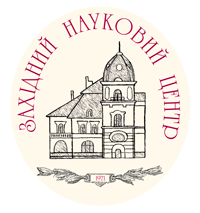Volodymyr DUTKA, Yaroslav KOVALSKYI, Anastasija YUSHCHUK, Halyna HALECHKO
Ivan Franko National University of Lviv, Kyryla I Mefodiya Str., 6, 79005 Lviv, Ukraine e-mail: vdutka@ukr.net
DOI: https://doi.org/10.37827/ntsh.chem.2025.78.127
MOLECULAR MODELING OF POLYACRYLIC ACID AND POLYANILINE COMPOSITES
Quantum-chemical calculations of macromolecules of polyaniline, polyacrylic acid and polymer-polymer composite formed by these two polymers were carried out. Since the studied objects have a polymer structure, calculations were carried out for 6 polyaniline units and 8 polyacrylic acid units. Thermodynamic parameters for polymers and composite were calculated. It is shown that intermolecular hydrogen bonds are formed between macromolecules of polyaniline and polyacrylic acid. The macromolecules of PANI and PAA can have many conformations. Depending on the conformational state, the composites will be characterized by different amounts of hydrogen bonds, and their energy will vary widely. The average energy of hydrogen bonds is found. A comparison of hydrogen bonds in the polyacrylic acid-polyaniline composite with the polymethacrylic acid-polyaniline composite indicates that PAA forms larger bonds with PANI and their energy is higher. The hydrogen bond energy for the PMAC-PANI composite is significantly lower, and the number of hydrogen bonds in the fragment is lower. This difference can be explained by the structural differences between the PAA and PMAC macromolecules. The hydrogen bonds formed in the composites affect the physicochemical properties.
Keywords: polymer-polymer composites, polyaniline, polyacrylic acid, polymethacrylic acid, hydrogen bonds.
References:
-
1. Sementsov Yu., Tang T.,Wang D, at all The system hpolyethylen and polypropylene CNTs nanofibers: quantum
chemical modeling and experimental characteristic. Physics and chemystryof solid state 2024. Vol. 25(4). P.
825–837. (https://doi.org/10.15330/pcss.25.4.825-837).
2. Tokar A., Synchuk E., Chentechnal O. The Quantum chemical modeling of structure and spectral characterristicfor
molecular complexes in pentaplast–terlon systems. Chemistry &chem. Technol. 2017. Vol. 11(4). P. 405–409.
https://doi.org/10.23939/chcht11.04.405.
3. Dutka V.S., Kovalskyi Ya. P. Molecular modeling of polyaniline macromolecules and physic-cyemical properties of
composites on their basis. Molecular Crystals and Liqud Crystals. 2022. Vol. 750(1). P. 42 – 49.
https://doi.org/10.1080/15421406.2022.2073035.
4. Dutka V.S., Kovalskiy Ya.. P., Khamar O.O., Halechko H.M. Nanocomposites of polyaniline and polymethacrylic
acids. Molecular Crystals and Liqud Crystals. 2023. Vol. 767(1). Р. 79–85.
https://doi.org/10.1080/15421406.2023.2228595.
5. Kchamar O., Dutka V., Yatsyshyn M., Kovalskyi Ya. Electrical conductivity and thermal stability of polyaniline
and water-soluble polymer nanocomposites. Molecular Crystals and Lyquid Crystals. 2024. Vol. 768(10). Р. 269–275.
https://doi.org/10.1080/15421406.2024.2348287.
6. Stewart J. J. Program Package МОРАС2016 (http://www.openmopac.net).
7. Senda N. Program Package Winmostar (http://winmostar.com.
8. Dutka V., Aksimentyva O., Kovalskyi Ya., Halechco H. Molecular moldeling of theelectronnic properties and
structure of polyanilyne molecules. Visnyk Lviv University Ser. Chem. 2018. Iss. 59. P. 444–449.
https://doi.org/10.30970/vch.5902.444.
9. Dutka V. Kovalsrys Ya. Kachmarek V., Khamar O., Halechko H. Intermolecular intereaction between macromolecules
of polymethacrylic acid and polyaniline in a polymer composites. Visnyk of the Lviv University. Series Chemisnry.
2022. Iss. 63. P. 308–313. https://doi.org/10.30970/vch.6301.308.
How to Cite
DUTKA V., KOVALSKYI Ya., YUSHCHUK A., HALECHKO H. MOLECULAR MODELING OF POLYACRYLIC ACID AND POLYANILINE COMPOSITES. Proc. Shevchenko Sci. Soc. Chem. Sci. 2025. Vol. 78. P. 127-134.

